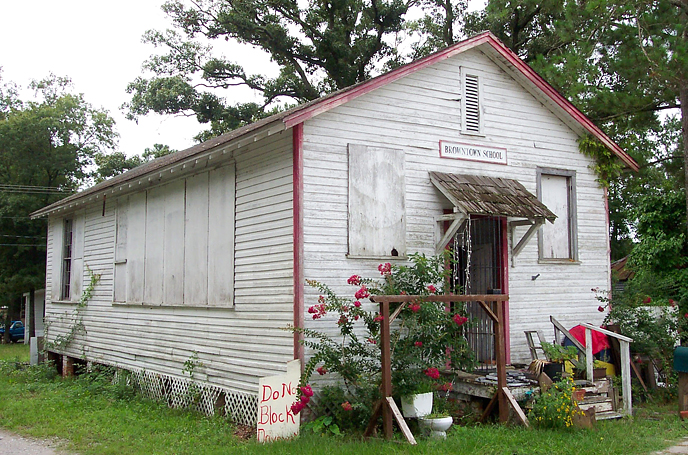The weatherbeaten skeleton of a brick building stands in the 700 block of Castle Street. The roof has long since rotted away. There are no doors or windows — only openings where they once were. But even in its decrepit condition, it is still considered well worth saving.
The H. Jaffe Building, which dates to 1920, represents Wilmington’s commercial development in the early half of the 20th century, and has been placed on the 2015 Most Threatened Places list by the Historic Wilmington Foundation. Other landmarks on the list include historic churches and cemeteries, schools, Wilmington’s brick streets and the iconic Murchison Building in downtown Wilmington.
The Jaffe building was the backdrop as this year’s list was revealed May 27.
“The good news is that we have made a lot of progress in historic preservation since this organization started 49 years ago,” said foundation President Kent Stephens. But as the annual threatened places list shows, there are still pieces of the region’s past in danger of disappearing forever.
Ironically, the Jaffe building was on the foundation’s first list of threatened structures in 2006. It fell off the list for a while because a buyer had plans to restore it, but then the economy bottomed out, said George Edwards, foundation executive director. Now it is back on the list, although a new owner has said he would like to see the building rehabilitated.
The building once housed the Castle Street Furniture Co., owned by Harry Jaffe.
David Brinkley, who has owned the building for about a year and one-half, said in a telephone interview that he would love to see the building saved.
“In an ideal world, I’d like to put a high-end steakhouse in that building,” Brinkley said. He cited redevelopment efforts under way along and near Castle Street, including housing complexes and new restaurants. “I think Castle Street’s the next major thoroughfare,” he said. “I would like to restore it. I’d love to see it saved. It’s got a lot of history associated with it.”
Deputy State Historic Preservation Officer Ramona Bartos was on hand for Wednesday’s news conference unveiling the annual danger list. She cited the Historic Wilmington Foundation as “one of the leading lights in the state” when it comes to preservation efforts.
Indeed, since the watch list was first published, eight structures have been saved and 10 are no longer in immediate danger, Edwards said. Six have been demolished and 13 are still considered to be threatened.
Although preservation efforts are nothing new to Wilmington, residents of rural areas are now becoming more active in saving pieces of their history. Al Beatty is among them, and is part of a group that hopes to restore Reaves Chapel in Navassa.
The church, which formerly housed an African Methodist Episcopal congregation, was built by former slaves between 1880 and 1900. Beatty, who represented the Cedar Hill West Bank Heritage Foundation at the news conference, said the group hopes either to buy the building or to persuade the current owner to allow a restoration.
“It’s in sad shape,” he said of the abandoned church, which is deteriorating. “We had and still have a vision of honoring our elders of our past” by preserving it, he said.
Most Threatened Places in Southeastern N.C.
• The Jaffe Building
• Wilmington’s brick streets
• The Murchison Building, the city’s original skyscraper
• Historic cemeteries, including the Flemington-Oak Grove Cemetery, the Ferrell Coleman Cemetery in Ash, the Joseph Hewett Sr. Cemetery near Holden Beach, and rare wooden cemetery markers throughout the region
• Historic churches: St. Mark’s AME Zion Church near Shallotte; Reaves Chapel, Navassa; and St. Peter and Paul Russian Orthodox Church in Pender County, whose congregation now numbers only three
• Rocky Point school buildings
• The Rosenwald Schools
• The Fowler House at 226 S. Front St., which formerly housed a restaurant
• Historic wooden windows
• Historic immigrant communities, represented by the Leimone Homestead at St. Helena
email [email protected]




